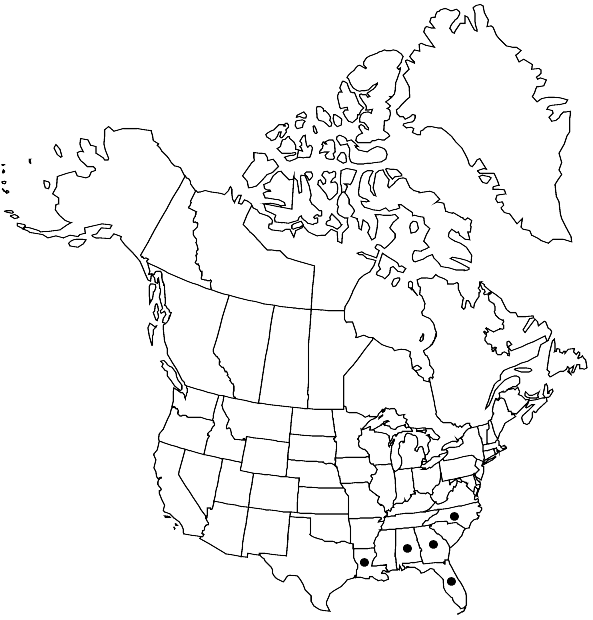Campylopus surinamensis
Linnaea 21: 186. 1848,.
Plants 0.5–3 cm, in loose tufts, light green, young plants forming low rosettes, older plants taller, with a stem arising from the rosette with densely appressed leaves, ending in a comal tuft that consists of perichaetia or produces brood leaves. Leaves 4–7 mm, narrow lanceolate, narrowed to a short (in stem leaves) or long (in rosette and comal leaves) serrate subula; alar cells sometimes well developed, forming reddish or hyaline auricles, sometimes not much differentiated; basal laminal cells of appressed stem leaves more or less thick-walled, of comal leaves thin-walled, narrower at margins, forming an indistinct small border; distal laminal cells short to long-rectangular or oblique, 2–5:1; costa filling half of the leaf width, excurrent in a serrate awn that is subhyaline in the comal leaves, in transverse section with adaxial hyalocysts and abaxial groups of stereids, abaxially ribbed. Specialized asexual reproduction by small hooked or boomerang-shaped leaves (similar to those of C. fragilis) in axils of comal leaves. Sporophytes not seen in North America.
Habitat: Open, acidic, sandy soil in sandhills or open forests, white sands
Elevation: 0-50 m
Distribution

Ala., Fla., Ga., La., N.C., West Indies (Cuba, Trinidad), Central America (Honduras), South America.
Discussion
Campylopus surinamensis was named C. gracilicaulis in North America before the identity with the South American C. surinamensis was determined. As expressed in the description, the rosette leaves, appressed stem leaves and comal leaves have a different shape, have different, short or long, concolorous or subhyaline leaf tips and different basal laminal cells. This and the variability of the plant morphology have caused confusion. The almost hairpointed apices of the comal leaves have led to identification as C. introflexus, the production of brood leaves to identification as C. fragilis. The confusion increased when Bartram transferred C. gracilicaulis and C. donnellii to C. flexuosus, as he did with C. subleucogaster. The latter was regarded as a distinct species by Williams but placed as a variety of C. tallulensis by Grout. The type specimen of C. donnellii does not differ from those of C. surinamensis or C. gracilicaulis. However, this name has frequently been used for forms of C. surinamensis without comal tufts or consisting only of small rosettes
Selected References
None.